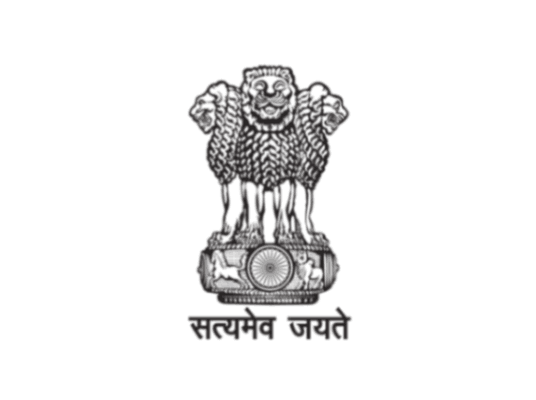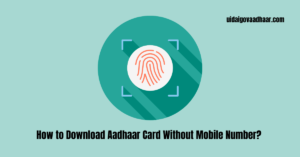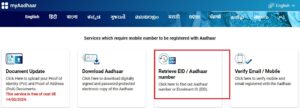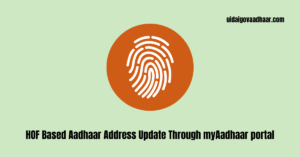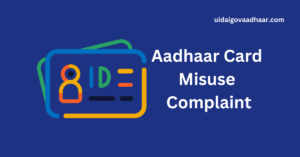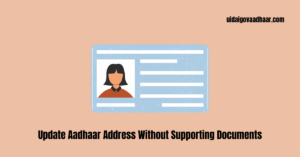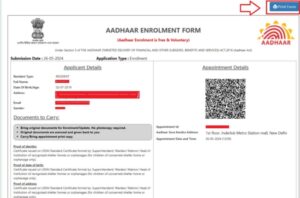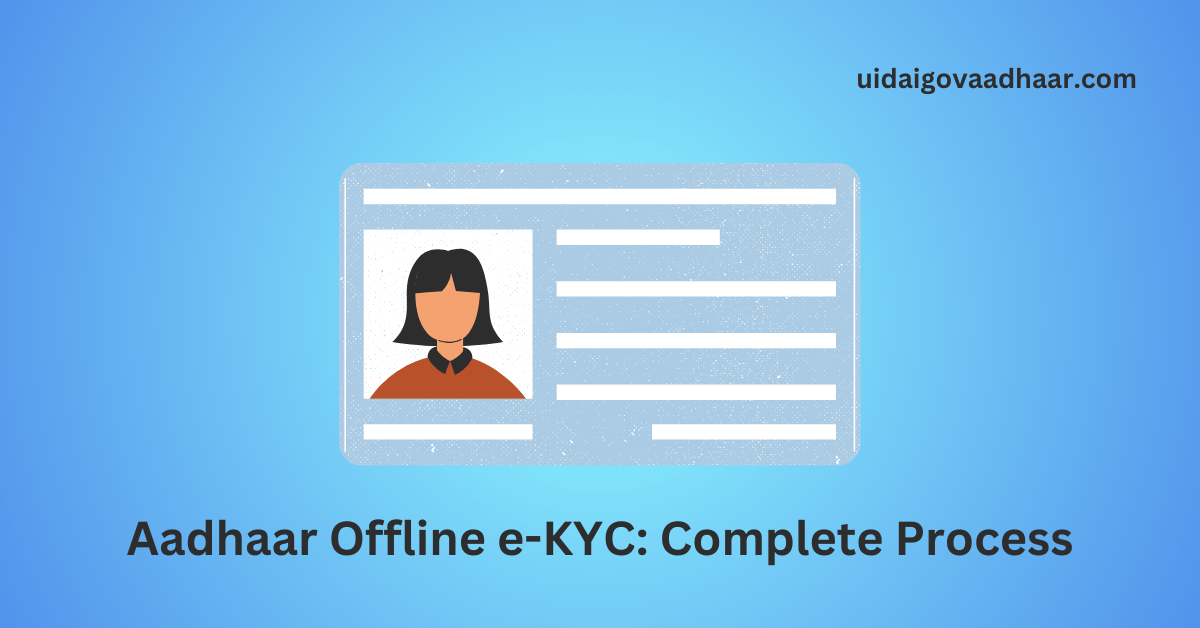 Aadhaar Paperless Offline e-KYC: A Revolution in Secure and Convenient Offline Verification
Aadhaar Paperless Offline e-KYC: A Revolution in Secure and Convenient Offline Verification
Know Your Customer (KYC) verification is an important process for service providers to validate the identity of customers before onboarding them. Traditionally, physical documents like PAN cards, passports or driving licenses have been used for offline KYC.
However, the Aadhaar Paperless Offline e-KYC offers a more secure, private and tech-enabled solution for paperless offline verification.
What is Aadhaar Paperless Offline e-KYC?
Aadhaar Paperless Offline e-KYC is a digitally signed XML document that can be used for instant offline identity verification based on Aadhaar data. It contains demographic details like name, date of birth, gender, address and photograph. Most importantly, it does not have the actual Aadhaar number. Instead a reference ID is included which is the last 4 digits of Aadhaar number and timestamp.
To generate this XML, the Aadhaar holder has to authenticate using OTP on the UIDAI website or mAadhaar app. The XML file is then digitally signed by UIDAI and password protected before download. This ensures the authenticity and integrity of the data. The password or share code has to be provided by the Aadhaar holder to anyone who needs to verify their identity using the XML.
Also Read:
- UIDAI Login
- UIDAI Appointment
- Aadhaar Customer Care Number
- UIDAI PVC Card Status
- Order Aadhaar PVC Card
- Download Aadhaar Card
- Update UIDAI Mobile Number
Who are the Users of Aadhaar Paperless Offline e-KYC?
There are two primary users of this facility:
Aadhaar Holders
Any Indian resident with an Aadhaar number can opt for this method to share demographic data for offline verification purposes instead of physical documents. It gives them greater privacy as their Aadhaar number is never shared. There is also no need to give any biometrics. They have full control over who gains access to their data through the use of a share code.
Service Providers
Banks, telcos, logistic firms, hospitals etc. who need to carry out KYC verification can use Aadhaar Paperless Offline e-KYC instead of physical documents. It is a faster and more foolproof solution. They don’t need to collect or store any Aadhaar data either which makes it compliant with regulations. The digitally signed XML ensures they get authentic information verified by UIDAI.
Key Benefits of Aadhaar Paperless Offline e-KYC
Here are some of the major benefits of using Aadhaar Paperless Offline e-KYC over traditional KYC processes:
Enhanced Privacy and Security
- Aadhaar number is never shared, only last 4 digits are included as reference. This minimizes the risks of identity theft or misuse.
- Password protection and digital signing ensures XML cannot be tampered with. Even if shared online, data remains secure.
- No biometric information needs to be captured or stored by service providers.
Paperless and Instant Verification
- Allows instant, real time identity verification without paperwork.
- Digital format enables seamless onboarding and processing.
- Easy to transmit XML across geographies for remote offline verification.
Reliable and Authentic Data
- XML is directly generated and signed by UIDAI which validates the authenticity of data.
- Harder to fake Aadhaar details compared to physical documents like driving license.
- Updated data as per UIDAI records as opposed to outdated physical documents.
- QR code to confirm authenticity and validate digital signature.
Compliance with Regulations
- Allows service providers to meet KYC and AML norms digitally without violating privacy clauses in Aadhaar Act.
- No need to store Aadhaar number or other data so minimizes compliance risks.
Convenience for Users
- Can generate XML online through website or mobile app in a few clicks.
- Share code keeps control in the hands of users.
- Can use same XML for multiple service providers. Don’t need to carry physical documents.
How Does Aadhaar Paperless Offline e-KYC Process Work?
The Aadhaar Paperless Offline e-KYC process involves the following simple steps:
1. Generate Aadhaar XML
To generate the Aadhaar Paperless Offline e-KYC XML, the user has to:
- Visit the UIDAI website or mAadhaar app
- Enter Aadhaar number and captcha code
- An OTP is sent to registered mobile
- User enters OTP to authenticate identity
- A share code (password) is created
- The XML file is then downloaded after digitally signing by UIDAI
2. Share XML File
The user can now easily share this XML file through email, messaging or USB drive along with the share code to any service provider for offline e-KYC verification. The share code ensures only authorized entities can access the XML data.
3. Offline Verification by Service Provider
For offline verification, the service provider has to:
- Use share code to open the encrypted XML file
- Render photo and extract demographic data
- Collect mobile number and email ID from user
- Verify hashed mobile number and email ID match collected data
- Validate integrity via digital signature using UIDAI’s public key
- Confirm authenticity of XML using the Aadhaar QR code
Once validated, the service provider can seamlessly complete offline KYC verification without collecting, storing or transmitting any Aadhaar data. The process is optimized for quick customer onboarding while also being highly secure and compliant with regulations.
Also Read:
- PAN Aadhaar Link Status Check via SMS
- Aadhaar Card Correction Form
- Aadhaar Card for NRIs
- Aadhaar Update
- UIDAI Bank Link Status
- Check Aadhaar Update Status Online
Is Aadhaar Paperless Offline e-KYC Mandatory?
While Aadhaar Paperless Offline e-KYC offers multiple benefits over traditional verification, it is not mandatory by law. The Aadhaar Act 2016 and subsequent amendments do not make it compulsory to use this method.
Service providers can choose to continue using physical documents for KYC as per their internal processes and compliance policies. However, using Aadhaar Paperless Offline e-KYC can make their customer onboarding easier, faster and more secure.
For individuals, this paperless method eliminates the hassle of carrying and sharing physical documents whenever identity verification is needed. But they can opt for traditional documents if they prefer.
Where is Aadhaar Paperless Offline e-KYC Applicable?
Aadhaar Paperless Offline e-KYC can be utilized wherever offline paperless identity verification is required. Some examples include:
- Opening a bank account
- Getting a new mobile connection
- Login to internet banking
- Booking tickets
- Renting accommodation
- Purchasing insurance
- Applying for loans
- Airport check-in
- Hotel check-in
- Hospitals for treatment
- Enrolling in schools/colleges
- Applying for government welfare schemes
Essentially any service provider that performs KYC verification for onboarding customers, providing access to services or facilities can implement Aadhaar Paperless Offline e-KYC. It is a viable digital alternative to time consuming and insecure physical document verification across industries.
Limitations of Aadhaar Paperless Offline e-KYC
While Aadhaar Paperless Offline e-KYC offers an enhanced paperless verification solution, there are some limitations to consider:
- Requires proper awareness among users to adopt this method
- Needs integration with service provider’s systems and processes
- Offline only, cannot perform real time authentication
- Data accuracy dependent on UIDAI records
- Vulnerable to misuse if XML shared without caution
However, despite these limitations, the convenience, security and reliability benefits make this digital KYC method the future of offline identity verification in India.
The Road Ahead for Aadhaar Paperless Offline e-KYC
Going forward, Aadhaar Paperless Offline e-KYC is poised to become the preferred way for paperless offline KYC verification across sectors. Here are some expected trends:
Increasing Adoption Across Industries
More and more service providers like banks, telcos, fintech firms, airports, hotels etc. will integrate support for Aadhaar Paperless Offline e-KYC in their customer onboarding journeys. APIs and SDKs by startups will make adoption easier.
Process Automation
The verification process will become highly automated using technologies like AI, ML and biometrics for instant paperless KYC. Service providers can validate Aadhaar XML in real-time with minimal manual intervention.
Evolution as a Platform
Aadhaar Paperless Offline e-KYC has the potential to evolve into an open digital trust platform where other identification documents like PAN, driving license can also be verified in a paperless manner.
Push for Paperless Economy
Digital initiatives like DigiLocker along with Aadhaar Paperless e-KYC will accelerate India’s transition to a paperless economy with digital documents replacing physical paperwork.
Enhanced Data Privacy and Consent
As privacy awareness increases, users will prefer Aadhaar Paperless e-KYC over sharing documents like passport which have a lot of personal information. Consent driven sharing will become crucial.
Conclusion
Aadhaar Paperless Offline e-KYC has opened the doors to a future of paperless, presence-less and consent-driven service delivery. As more stakeholders realize its benefits, this digital transformation can greatly improve convenience while also upholding privacy for the common citizen.
